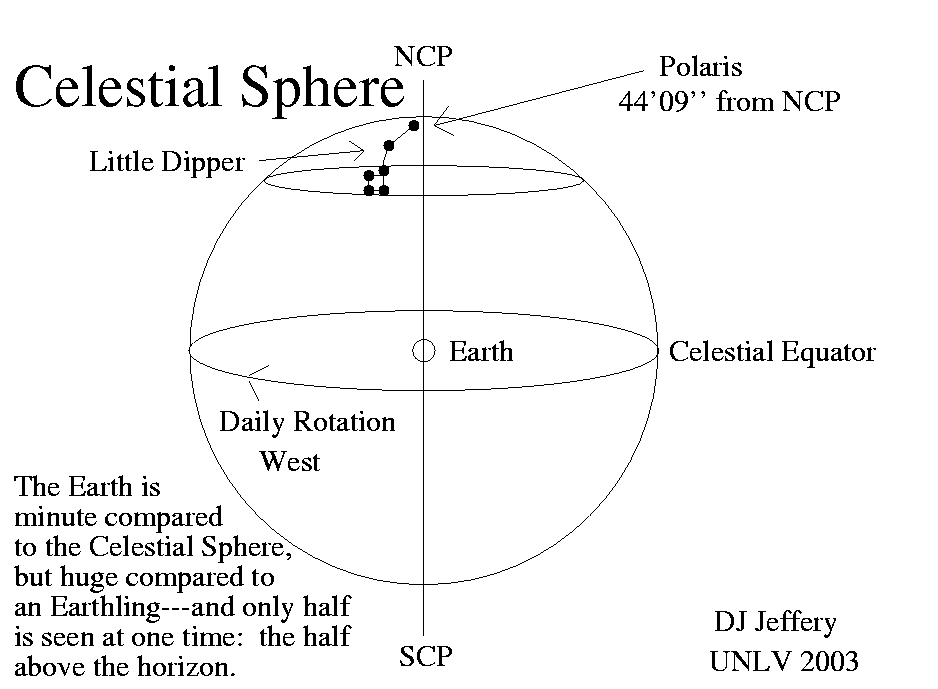
Caption: The celestial sphere and some of its salient features.
Features:
- The displayed axis is the celestial axis
which is just an extension of the
Earth's axis
to the celestial sphere itself.
- The intersections of the
celestial axis with the
celestial sphere are the
north celestial pole (NCP)
(in the north)
and the south celestial pole (SCP)
(in the south wouldn't you know it).
- Taking the Earth as the frame of rest,
the celestial sphere
rotates westward once per day on the celestial axis.
To be exact, one sidereal day = 86164.0905 s = 1 day - 4 m + 4.0905 s (on average) which is the time between transits of the meridian of a fixed star.
- The projection of the Earth's equator
onto the celestial sphere
is the celestial equator.
The celestial sphere is a great circle---which is a circle that divides sphere in half.
- The fixed stars
rotate once per
sidereal day
on small circles---which are
circles which divide a
sphere unequally.
Well fixed stars on the celestial equator rotate on a great circle, the celestial sphere itself.
- The constellations
and asterism
(non-IAU
constellations) also rotate once per
sidereal day, of course.
- Little Dipper is one such
asterism.
- Polaris, the end of the handle of the
Little Dipper, is the
pole star of our historical period.
It is 44'9.2'' ≅ 0.75° from the NCP (for epoch J2000).
This means that Polaris executes only a tiny small circle around the NCP and to casual observation in naked-eye astronomy does NOT seem to move at all.
- To casual observation, Polaris
defines the NCP.
Image link: Itself.
Local file: local link: celestial_sphere_001_features.html.
File: Celestial sphere file: celestial_sphere_001_features.html.